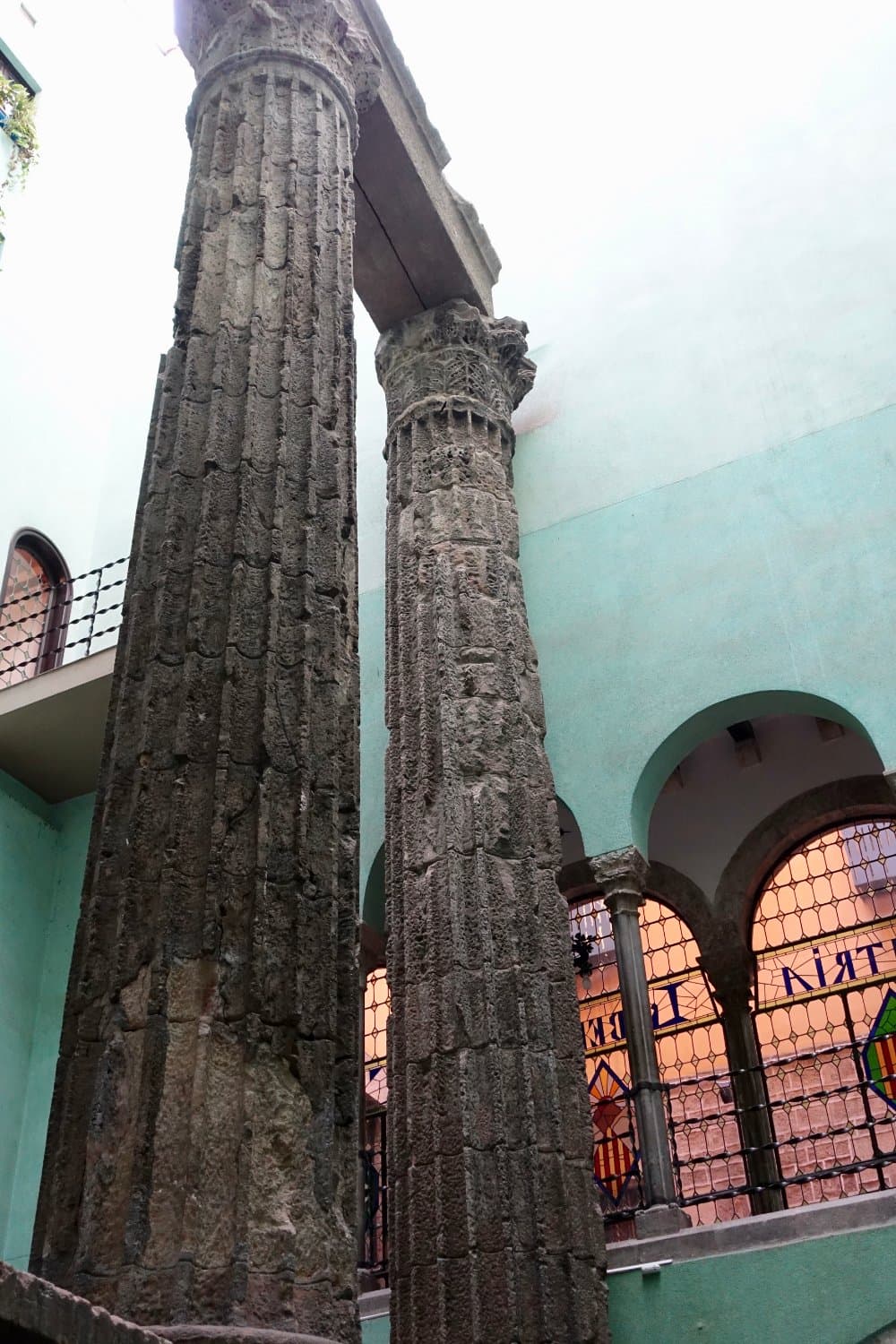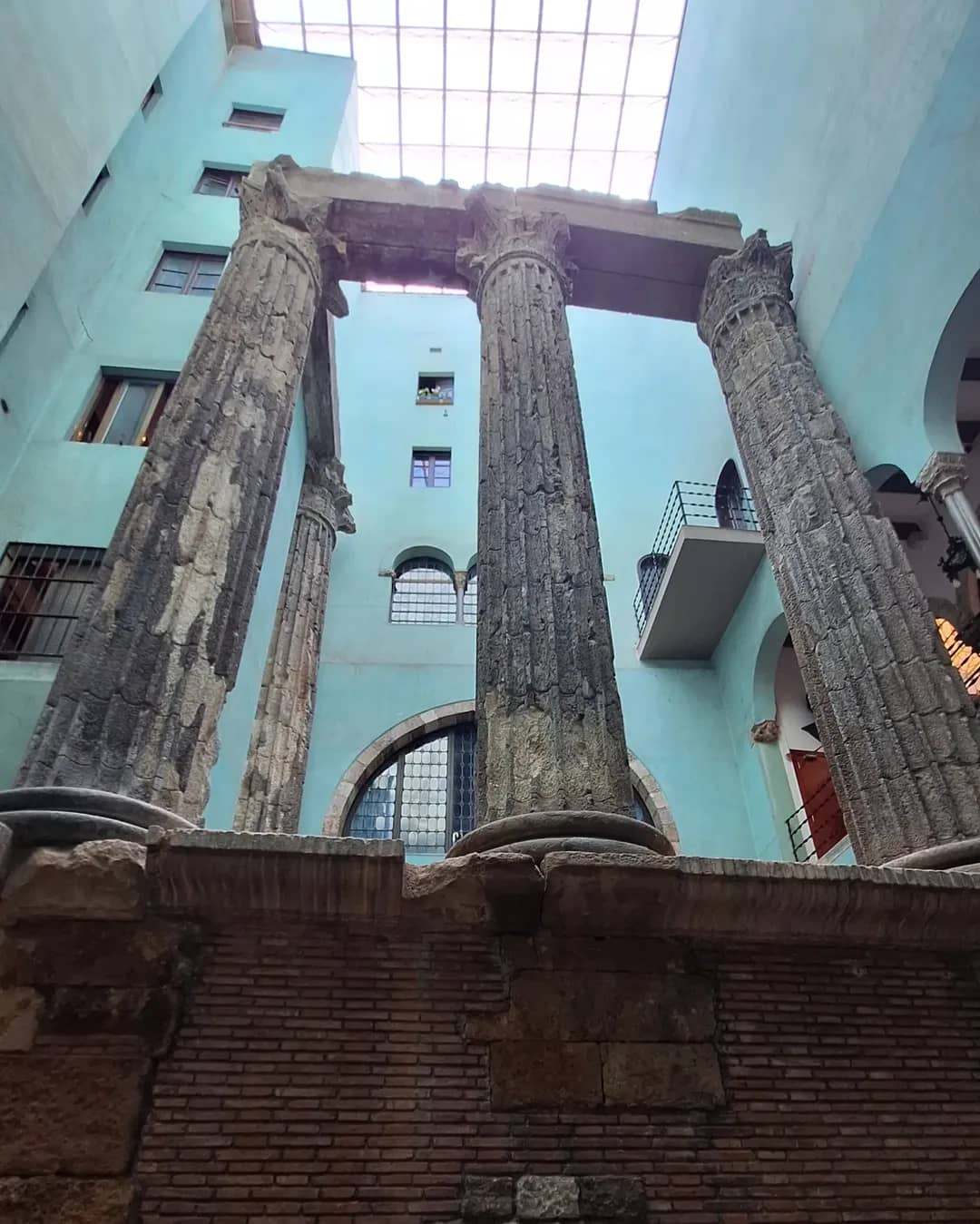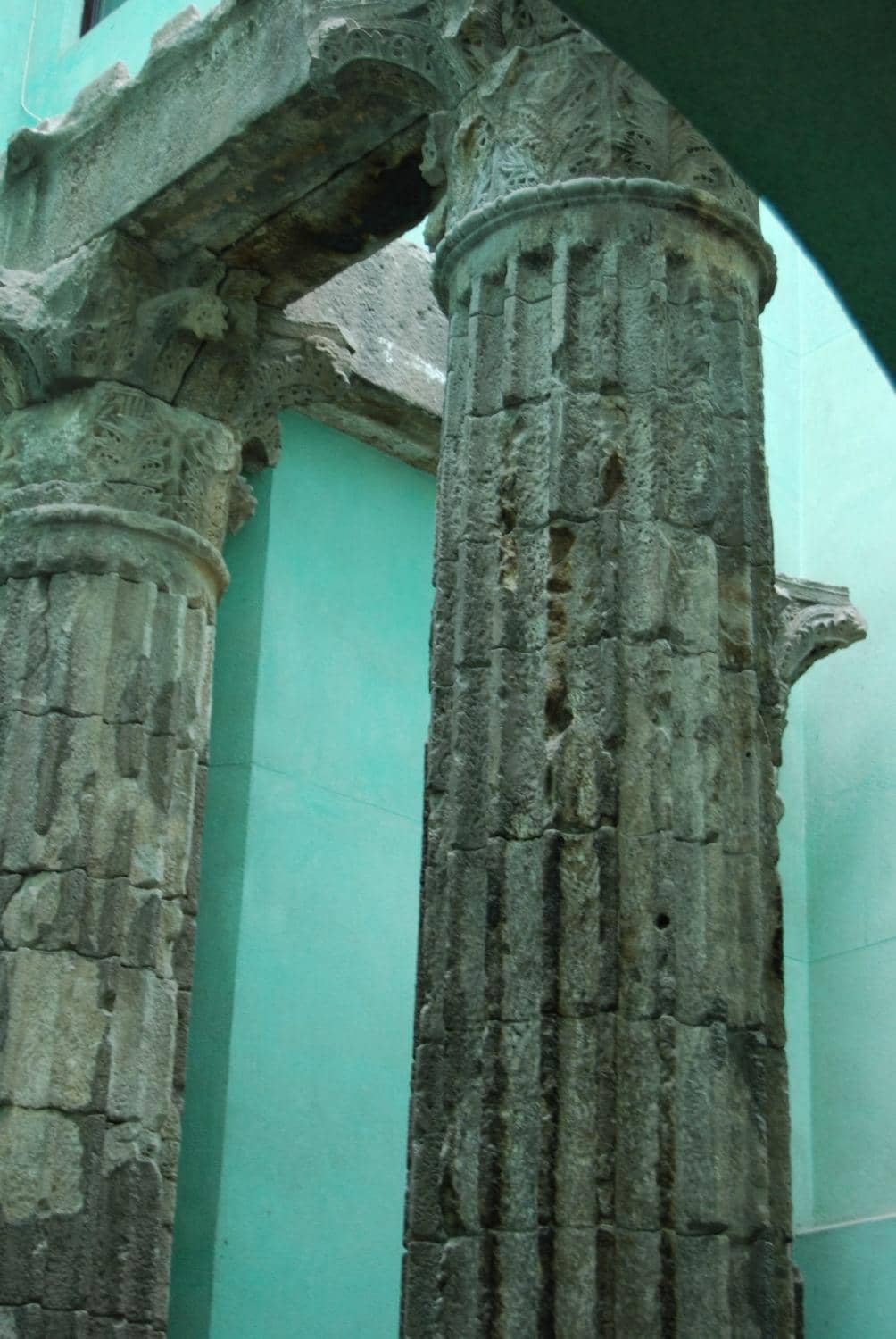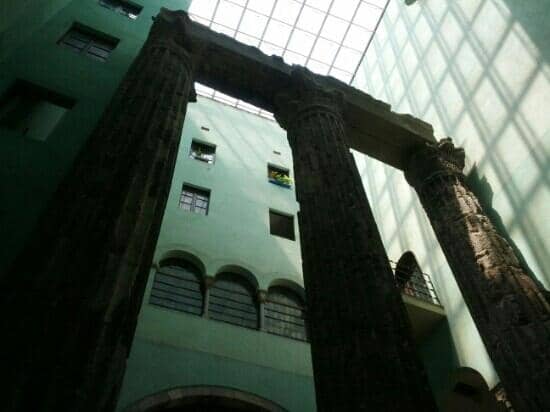
MUHBA Temple of Augustus Barcelona Spain
Discover the majestic Roman Temple of Augustus columns, a 1st-century BCE marvel in Barcelona's Gothic Quarter.

Highlights
Must-see attractions

Social
From TikTok & Reddit
Best Time
Fewer crowds, better photos

MUHBA Temple of Augustus Barcelona Spain
Best Time
Fewer crowds, better photos

Highlights
Must-see attractions
Discover the majestic Roman Temple of Augustus columns, a 1st-century BCE marvel in Barcelona's Gothic Quarter.
"A stunning glimpse into Roman Barcino, right in the heart of the Gothic Quarter!"

Combine with MUHBA Visit
Don't miss the MUHBA Plaça del Rei for a deeper dive into Roman Barcino's history. :ticket:
Capture the Columns
Visit early or late to get unobstructed photos of the impressive columns. :camerawithflash:

Highlights
Discover the most iconic attractions and experiences

Majestic Corinthian Columns
Courtyard
Four towering Corinthian columns, remnants of the ancient Roman Temple of Augustus, stand as a testament to Barcelona's rich past.

Hidden Roman History
MUHBA Plaça del Rei
Explore the underground ruins of Roman Barcino, including the temple's foundations, at the adjacent MUHBA museum.
Plans like a pro.
Thinks like you
Planning Your Visit
A Glimpse of Roman Barcino
Best Time to Beat the Crowds
Best Times
Insider Tips
from TikTok, Instagram & Reddit
Combine with MUHBA Visit
Don't miss the MUHBA Plaça del Rei for a deeper dive into Roman Barcino's history. :ticket:
Capture the Columns
Visit early or late to get unobstructed photos of the impressive columns. :camerawithflash:
Gothic Quarter Charm
Enjoy the surrounding medieval streets after your visit. :walking:
Tips
from all over the internet
Combine with MUHBA Visit
Don't miss the MUHBA Plaça del Rei for a deeper dive into Roman Barcino's history. :ticket:
Capture the Columns
Visit early or late to get unobstructed photos of the impressive columns. :camerawithflash:
Gothic Quarter Charm
Enjoy the surrounding medieval streets after your visit. :walking:
What Travellers Say
Reviews Summary
Visitors praise the Temple of Augustus for its impressive Roman columns and its integration into the charming Gothic Quarter. Many recommend combining the visit with the MUHBA museum for a deeper dive into Barcelona's Roman history, though some note the site itself is quite small.
"free entry! quite a surprise too. in the inner courtyard of a building there are original roman structures. three of the pillars have been originally found here, those that are pictured on the engraving on the outside wall. the others have been found over the historical center of the city and have been added here. //
Romans typically built there places of wordship at the highest points in their cities, which is also true for this one. on the outside door, right hand side you can see the plaque saying "highest point, 16.9m above sea level""
Fabian Jöbstl
"This was another stop on my free walking tour.
Pretty neat thing to see i would have not known abt it if i wasnt on the tour.
The surrounding area is also nice to walk around and take in all the history.
This was free to enter."
Qu Sd
"It’s a must see site, just 4 columns dated back to 1st century BC still standing tall inside of a building. Just sit there and suck it in contemplating on how grandeur it would have been back in ancient time for people to come to this temple. It’s free and located right around the corner of the cathedral inside the medieval wall."
WhatEmmanuelleSees
What People Like
What People Dislike
Frequently Asked Questions
🚇 🗺️ Getting There
The Temple of Augustus is centrally located in the Gothic Quarter. You can easily reach it by metro to Jaume I (L4) or Liceu (L3) stations, followed by a short walk. Many bus routes also stop nearby. :bus: :metro:
Yes, it's quite accessible within the bustling Gothic Quarter. Look for the four prominent Corinthian columns, which are hard to miss once you're in the vicinity. :round_pushpin:
Absolutely! It's a pleasant 10-15 minute walk from the lower end of Las Ramblas, taking you through charming medieval streets. :walking:
🎫 🎫 Tickets & Entry
The columns themselves are visible from the small courtyard and are free to view. However, to explore the underground Roman ruins connected to the temple, you'll need a ticket for the MUHBA Plaça del Rei. :ticket:
The courtyard surrounding the columns is generally accessible during daylight hours. For the MUHBA museum, check their official website for current opening times. :clock1:
Viewing the exterior columns and courtyard is free. If you wish to see the excavated Roman remains beneath, a ticket to the MUHBA Plaça del Rei is required. :euro:
While the courtyard might be accessible at certain times, it's best to visit during daylight for the full experience and safety. The MUHBA museum has specific evening hours on certain days. :nightwithstars:
🎫 🏛️ Onsite Experience
Viewing the columns and courtyard takes about 15-30 minutes. If you plan to visit the MUHBA museum, allow at least 1-2 hours for a thorough exploration. :stopwatch:
It was a Roman temple dedicated to Emperor Augustus, built in the 1st century BCE when Barcelona was known as Barcino. It's one of the best-preserved Roman temples in Spain. :scroll:
While there aren't specific tours just for the columns, the MUHBA museum offers guided tours that often include the Roman Barcino site. Check the MUHBA website for details. :microphone:
The courtyard is generally accessible. However, the underground ruins at MUHBA may have limitations. It's advisable to check with MUHBA directly for specific accessibility information. :wheelchair:
You're in the heart of the Gothic Quarter! Explore Barcelona Cathedral, Plaça Sant Jaume, and wander through the charming narrow streets. :map:
📸 📸 Photography
Early mornings or late afternoons offer softer light and fewer people, making for better photography opportunities. Golden hour can be magical here. :camerawithflash:
Tripods are generally not permitted in the courtyard or within the MUHBA museum to avoid obstructing other visitors. Always check local regulations. :noentrysign:
Photography is usually allowed for personal use in most areas of the MUHBA museum, but flash photography might be restricted in certain exhibits. :iphone:
For Different Travelers
Tailored advice for your travel style
👨👩👧 Families with Kids
Tips for families:
* Keep it short and sweet: Focus on the most visually interesting parts of the MUHBA ruins.
* Engage their curiosity: Ask them to imagine what life was like for Roman children in Barcino. :thinking_face:
* Combine with a treat: Reward their exploration with a delicious gelato or churros nearby. :ice_cream:
🏛️ History Enthusiasts
Don't miss:
* The intricate details of the Roman mosaics and artifacts at MUHBA. :gem:
* Understanding the Garum production and wine-making facilities. :wine_glass:
* Comparing the Roman city layout with modern Barcelona. :world_map:
Deep Dives
In-depth insights and expert knowledge
Unearthing Roman Barcino
Beyond the visible columns, the true depth of Barcino's history lies beneath. The adjacent MUHBA Plaça del Rei museum offers an incredible journey into the excavated city. Visitors can walk through the remains of Roman houses, workshops, and even a wine factory, gaining a tangible sense of daily life over two millennia ago. This underground complex is a highlight for many, providing a comprehensive look at the city's Roman foundations.
Exploring these sites offers a unique perspective on Barcelona's evolution. It’s a chance to connect with the ancient roots of a vibrant modern metropolis, understanding how Roman influence shaped its urban fabric. The combination of the visible grandeur of the columns and the detailed underground ruins makes for a compelling historical experience.
Navigating the Gothic Quarter
After marveling at the Roman columns, take your time to wander. Discover the imposing Barcelona Cathedral, soak in the atmosphere of Plaça Sant Jaume (home to the city hall and Catalan government), and get lost in the narrow, winding streets that whisper tales of centuries past. The area is rich with independent boutiques, artisan shops, and traditional tapas bars.
Be prepared for crowds, especially during peak season. The best way to experience the Gothic Quarter is to embrace its maze-like nature. Allow yourself to get a little lost; you'll often stumble upon unexpected architectural gems or lively squares. Comfortable walking shoes are a must for navigating the cobblestone streets. :athletic_shoe:






Social
from TikTok, Instagram & Reddit